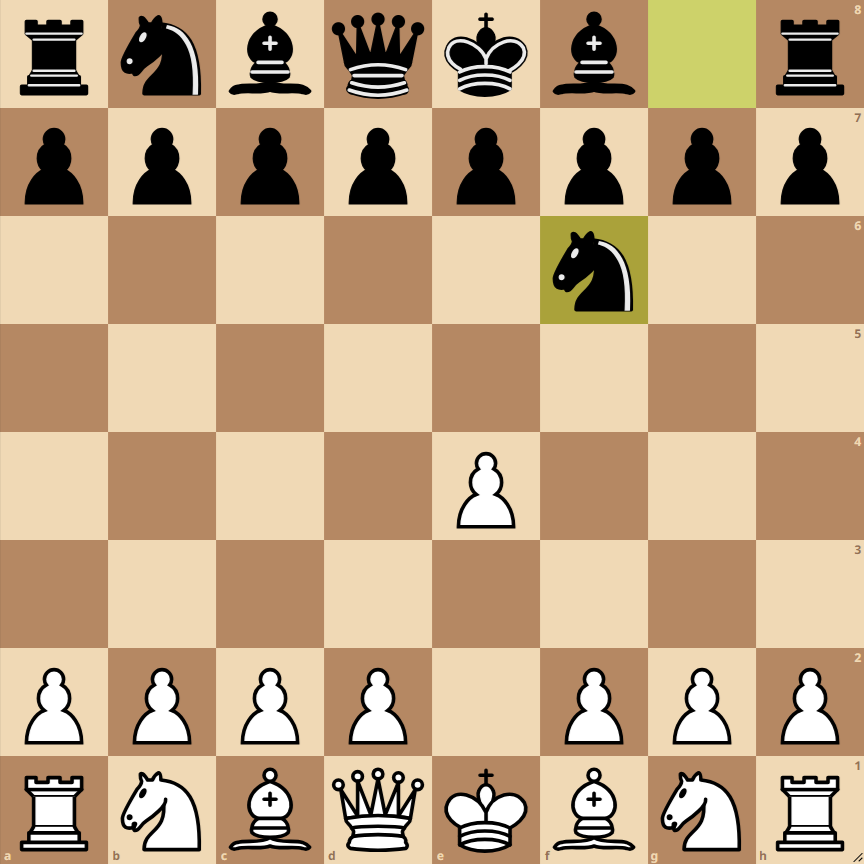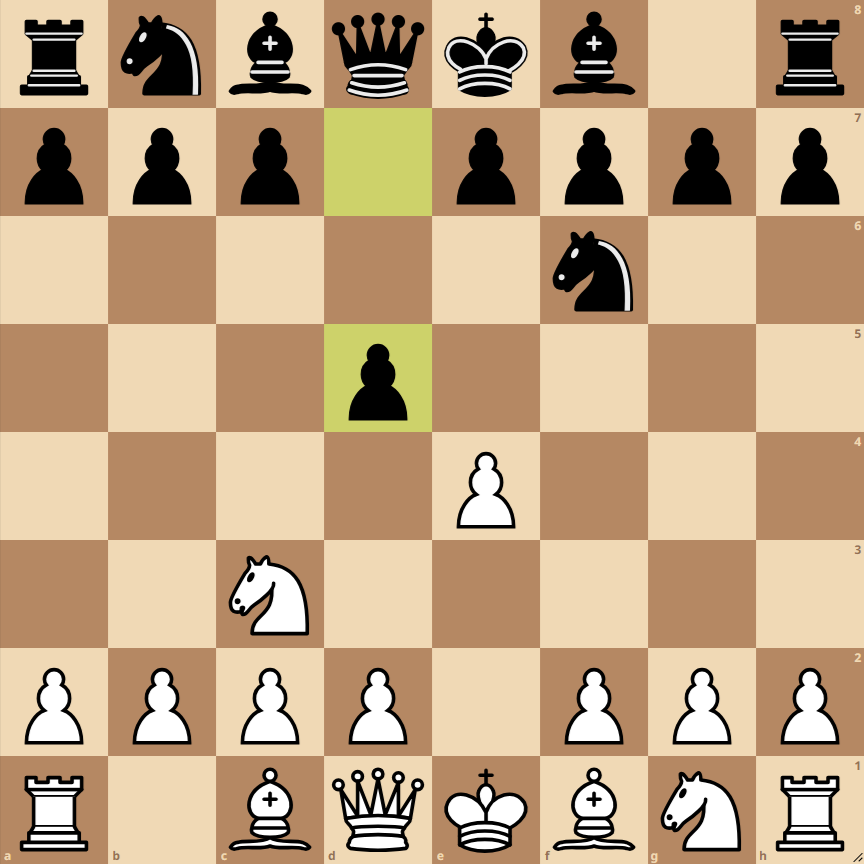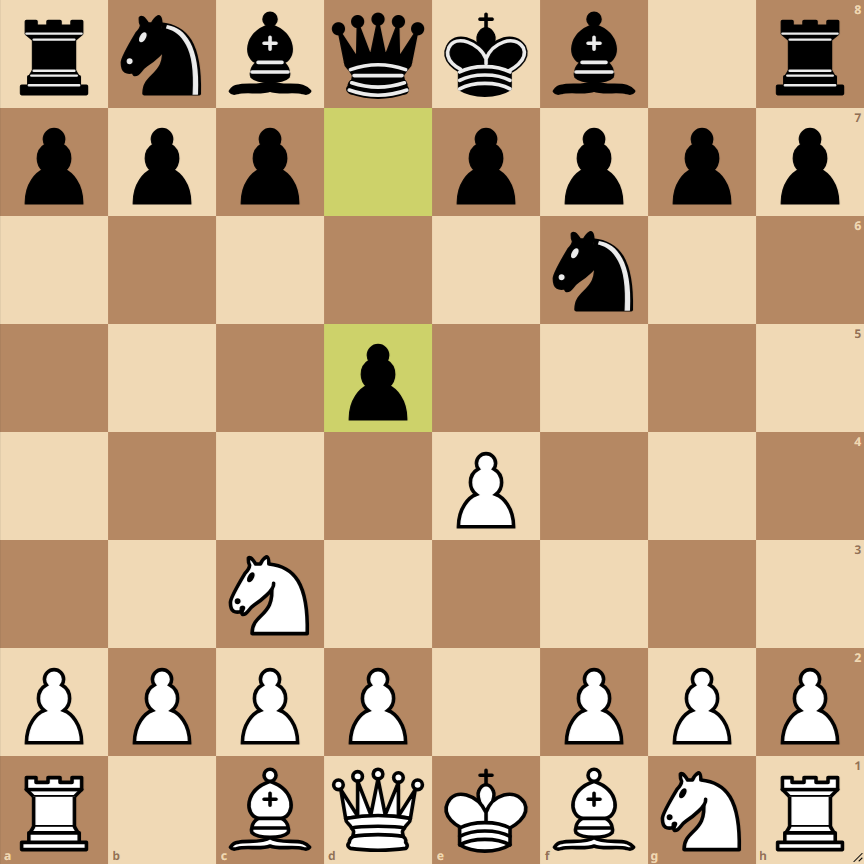Alekhine Defense, Scandinavian Variation


The Alekhine Defense, Scandinavian Variation, begins after the moves 1. e4 Nf6 2. Nc3 d5. This opening is an interesting and unconventional choice that can lead to dynamic games and unbalanced positions. Let’s analyze the position and strategies for both sides, as well as possible next moves.
White: Strategies and Tactics
exd5: This move captures the pawn on d5 and opens lines for the white pieces. The capture leads to a symmetrical pawn structure, which could simplify the game. Whites should focus on quickly developing their pieces and controlling the center.
e5: This pawn advance challenges the knight on f6 and aims to gain space in the center. Moving e5 is more aggressive and can lead to more complex positions. After e5, the black knight must relocate, giving whites the opportunity to develop their pieces with a slight time advantage.
Nf3: Developing the knight to f3 is a more conservative move. It supports the pawn on e4 and prepares for castling. This move maintains a solid central structure and allows whites to develop their game flexibly.
Black: Strategies and Tactics
Blacks, by playing 1…Nf6 and 2…d5, challenge white’s control of the center. Their goal is to unbalance the position and look for tactical opportunities.
In response to exd5, blacks can recapture the pawn with their queen, although they must be wary of possible developments and attacks by white pieces against the exposed queen.
If whites play e5, the black knight must move, typically to d7, where it can support a future …c5 to challenge the white center.
Against Nf3, blacks have several options, including continuing their development with …e6 or …g6, aiming to fianchetto their bishop, or even …Bg4, putting pressure on the knight on f3.
Conclusion
The Alekhine Defense, Scandinavian Variation, is an opening that offers both players numerous tactical and strategic opportunities. Whites have the choice to capture on d5, advance their pawn e5, or develop more pieces, while blacks seek to unbalance the situation and exploit any weaknesses in the white’s position. The choice of subsequent moves should be based on the preferred playing style and overall strategy of each player.

